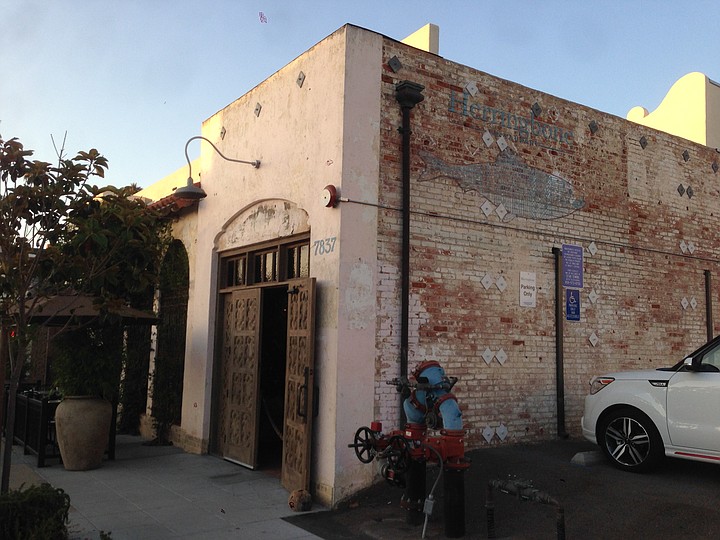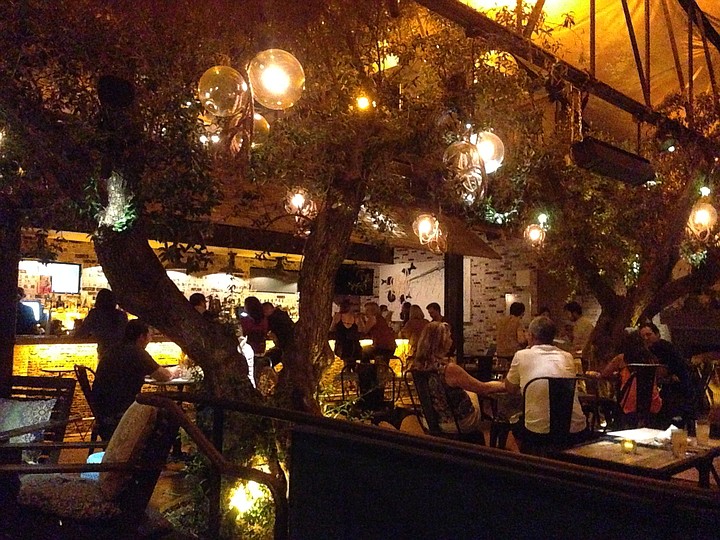 Facebook
Facebook
 X
X
 Instagram
Instagram
 TikTok
TikTok
 Youtube
Youtube

I never thought much about oysters. If you asked me what makes them different from mussels or clams, I'd probably say they make pearls. I do know what they taste like, but it's rarely happened that I've downed an oyster shooter and asked, "Which species of oyster am I eating?" Okay, that's never happened. At least, not until I spent a Thursday evening sitting at the bar of Herringbone.
Each weeknight from 4-6pm and all day Thursday, La Jolla's Herringbone includes a variety of one dollar shucked oysters with its happy hour menu. This night the oysters presented were Hood Canal, Kumamoto, Shigoku, and Blue Point — though it meant little to me at the time.

I now know Blue Points hail from Long island. Hood Canal oysters are named for the Puget Sound fjord they were raised in. The Kumamoto were raised in the Pacific Northwest as well, but the species originated off the coast of Japan. The most intriguing may be the Shigoku, a new breed of oyster produced in limited quantities by Taylor Shellfish, the company that created it. Kind of strange to think of a breed of animal as being "created," but like I said, I don't know oysters.
I got my four oysters and a couple of sauces — I stuck with the red cocktail sauce for consistency's sake — and began my survey of these raw bivalves.
The Hood Canal tasted like fresh seawater, which I mean in the best possible way — like some water splashed in my mouth while I was surfing as opposed to while a wave was holding me under.
By comparison, the smaller Kumamoto tasted oilier, fishier. Kind of like eating a piece of mackerel sashimi right after a bit of uni. I would hazard a guess that the true oyster aficionado would prefer this richer taste.

The Shigoku proved even smaller than the kumamoto, and while the flesh was denser, with a little more to chew on, the fishiness was a bit milder. I might call it a touch nuanced, though that may just be the fact of its rarity coloring my recollection.
I finished with Blue Point. Not surprisingly, this largest of the four bore the lightest flavor, and tasting it last it almost seemed refreshing, almost like a palate cleanser. Safe to say this is the least exotic of the bunch, and probably bears the oyster standard as far as mainstream flavor profiles go.
My task complete, I sat back, enjoyed a cocktail and relished the real reason to visit Herringbone — the gorgeous space. The one dollar oysters offer a great excuse to marvel at the large, olive tree-lined interior, without having to spend the dough on an entrée. I might have to go back and see which other oysters turn up on the menu.
Apparently there are still 150 other oyster varieties left for me to taste.


I never thought much about oysters. If you asked me what makes them different from mussels or clams, I'd probably say they make pearls. I do know what they taste like, but it's rarely happened that I've downed an oyster shooter and asked, "Which species of oyster am I eating?" Okay, that's never happened. At least, not until I spent a Thursday evening sitting at the bar of Herringbone.
Each weeknight from 4-6pm and all day Thursday, La Jolla's Herringbone includes a variety of one dollar shucked oysters with its happy hour menu. This night the oysters presented were Hood Canal, Kumamoto, Shigoku, and Blue Point — though it meant little to me at the time.

I now know Blue Points hail from Long island. Hood Canal oysters are named for the Puget Sound fjord they were raised in. The Kumamoto were raised in the Pacific Northwest as well, but the species originated off the coast of Japan. The most intriguing may be the Shigoku, a new breed of oyster produced in limited quantities by Taylor Shellfish, the company that created it. Kind of strange to think of a breed of animal as being "created," but like I said, I don't know oysters.
I got my four oysters and a couple of sauces — I stuck with the red cocktail sauce for consistency's sake — and began my survey of these raw bivalves.
The Hood Canal tasted like fresh seawater, which I mean in the best possible way — like some water splashed in my mouth while I was surfing as opposed to while a wave was holding me under.
By comparison, the smaller Kumamoto tasted oilier, fishier. Kind of like eating a piece of mackerel sashimi right after a bit of uni. I would hazard a guess that the true oyster aficionado would prefer this richer taste.

The Shigoku proved even smaller than the kumamoto, and while the flesh was denser, with a little more to chew on, the fishiness was a bit milder. I might call it a touch nuanced, though that may just be the fact of its rarity coloring my recollection.
I finished with Blue Point. Not surprisingly, this largest of the four bore the lightest flavor, and tasting it last it almost seemed refreshing, almost like a palate cleanser. Safe to say this is the least exotic of the bunch, and probably bears the oyster standard as far as mainstream flavor profiles go.
My task complete, I sat back, enjoyed a cocktail and relished the real reason to visit Herringbone — the gorgeous space. The one dollar oysters offer a great excuse to marvel at the large, olive tree-lined interior, without having to spend the dough on an entrée. I might have to go back and see which other oysters turn up on the menu.
Apparently there are still 150 other oyster varieties left for me to taste.
Comments